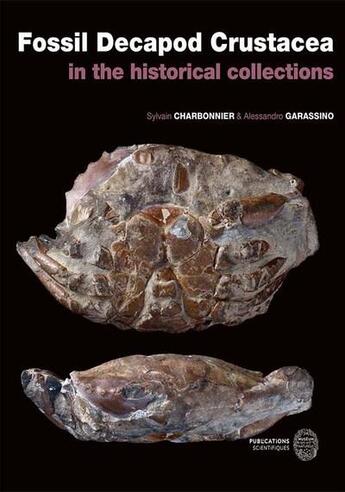Merci à toutes et à tous pour cette aventure collective
Passionné(e) de lecture ? Inscrivez-vous
gratuitement ou connectez-vous pour rejoindre la
communauté et bénéficier de toutes les fonctionnalités du site !

The present volume is dedicated to extinct crustaceans housed in the oldest palaeontological collections of the Muséumnational d'Histoire naturelle (MNHN) in Paris (France). These specimens were all collected between 1750 and 1880, aperiod stretching from the end of the Enlightenment to the Third French Republic, which also saw the transition fromthe King's Cabinet to the new National Museum of Natural History, founded in 1793. They paved the way to a new discipline,palaeocarcinology, at the very beginning of the nineteenth century. The main purpose of the present monograph is to providea global review of all the type specimens described by three pioneers in the field, namely Anselme-Gaëtan Desmarest, HenriMilne Edwards and Alphonse Milne-Edwards. An overall review of 94 species described by these scientists and their respectivecontemporaries is presented, encompassing 776 historical and type specimens from the cabinets of natural history and the King'sCabinet to the national collections. The old literature is updated and the taxonomic treatment includes detailed descriptions ofeach species. The 94 revised species are assigned to the suborder Dendrobranchiata Rafinesque, 1815 (1 species), the infraordersAstacidea Latreille, 1802 (5 species), Glypheidea Winkler, 1881 (9 species, including a new one), Achelata Scholtz & Richter, 1995(3 species), Anomura MacLeay, 1838 (7 species) and Brachyura Linnaeus, 1758 (69 species). All species are comprehensivelyillustrated in 742 figures to allow comparisons between the old illustrations and the present ones. Numerous type specimens aredepicted for the very first time, and artistic reconstructions of eight species are proposed.The Mémoires du Muséum publish the first global review of fossil crustaceans housed in Paris since the 1750s. Most of thehistorical specimens illustrated here were at the origin of the birth of a new discipline named Palaeocarcinology.
Il n'y a pas encore de discussion sur ce livre
Soyez le premier à en lancer une !

Merci à toutes et à tous pour cette aventure collective

Lara entame un stage en psychiatrie d’addictologie, en vue d’ouvrir ensuite une structure d’accueil pour jeunes en situation d’addiction au numérique...

Un douloureux passage à l'âge adulte, entre sensibilité et horreur...

Blanche vient de perdre son mari, Pierre, son autre elle-même. Un jour, elle rencontre Jules, un vieil homme amoureux des fleurs...